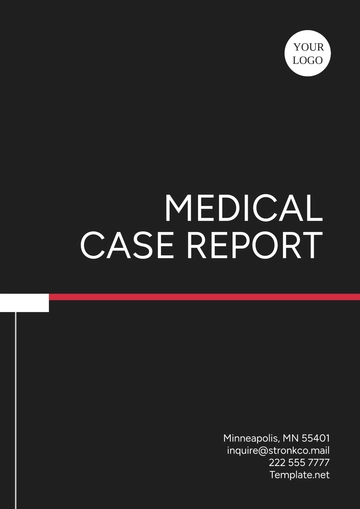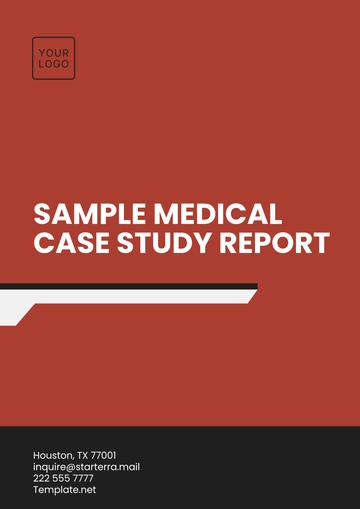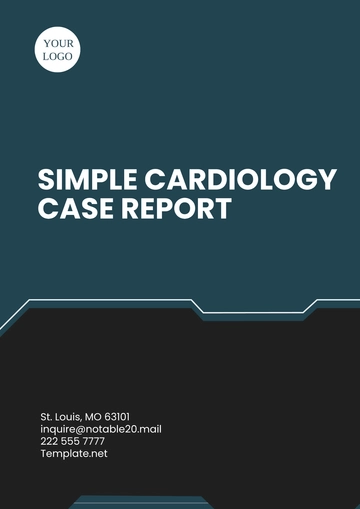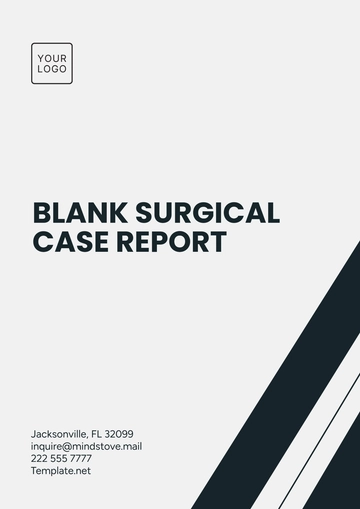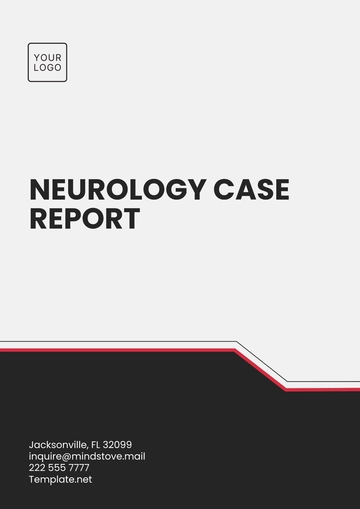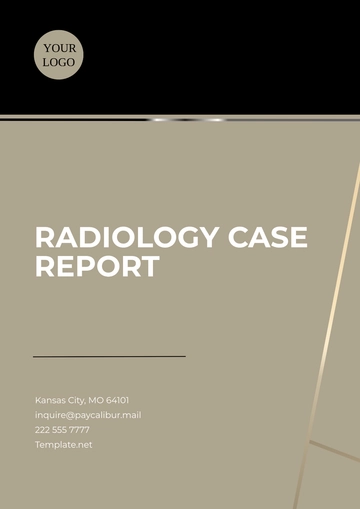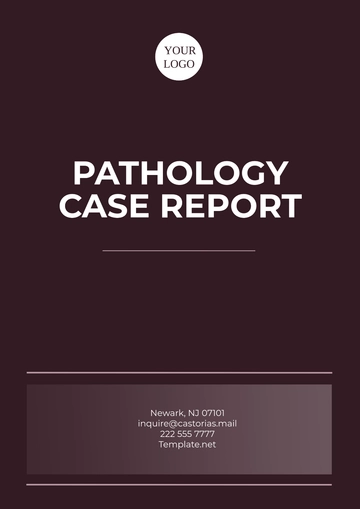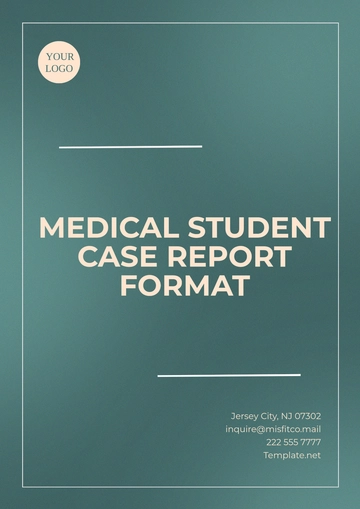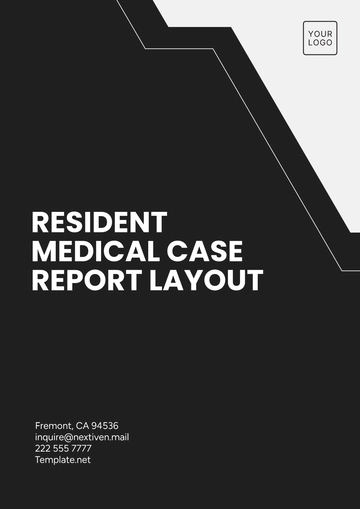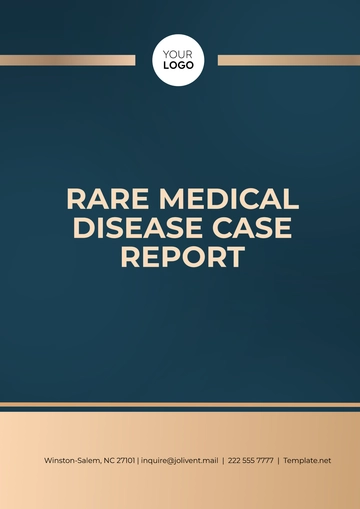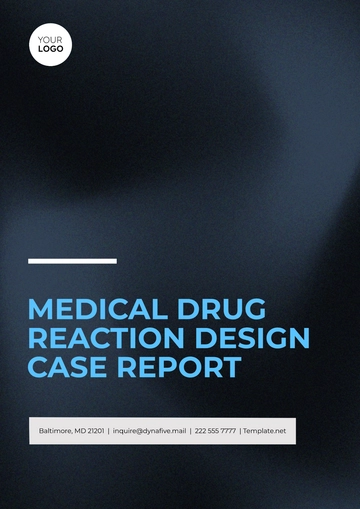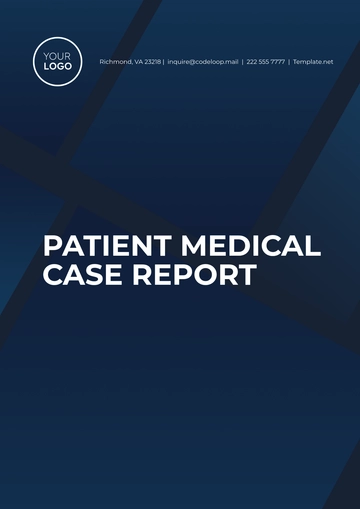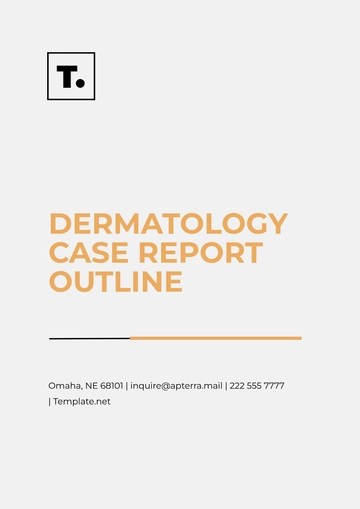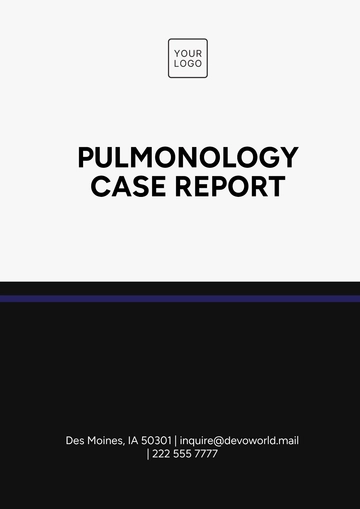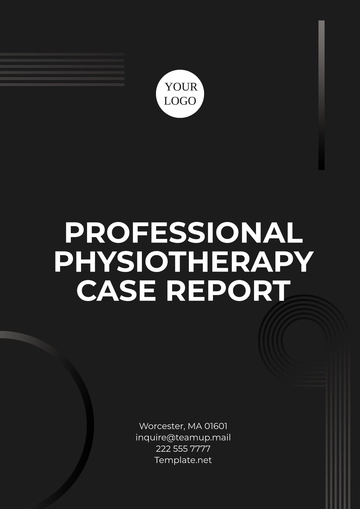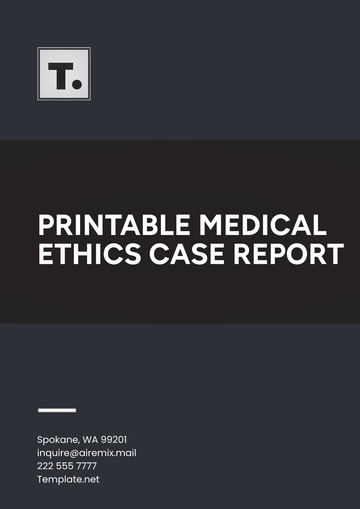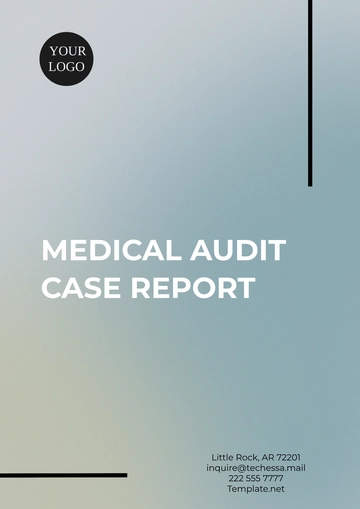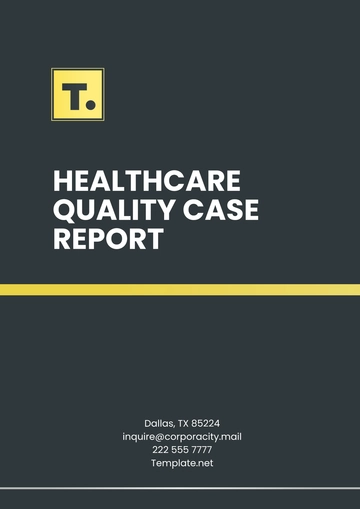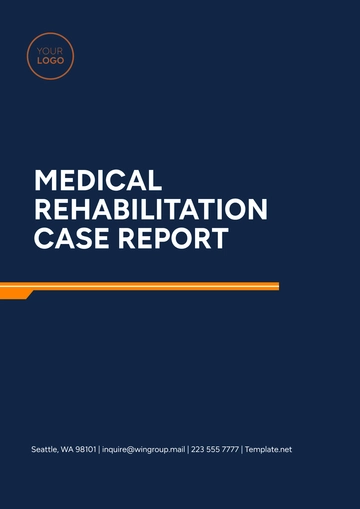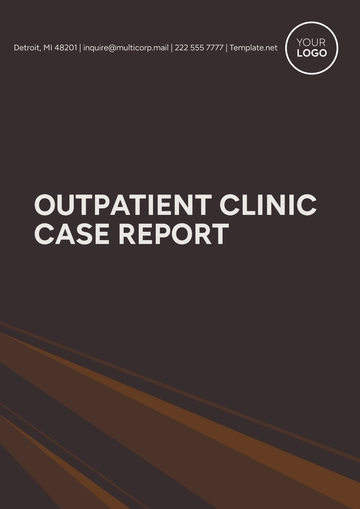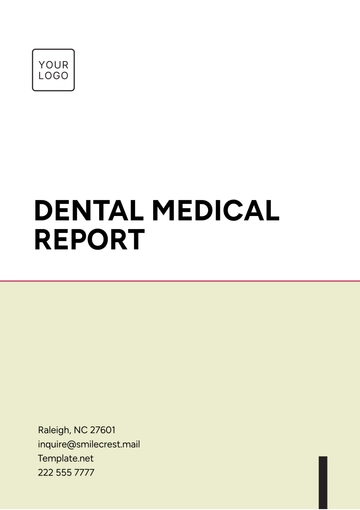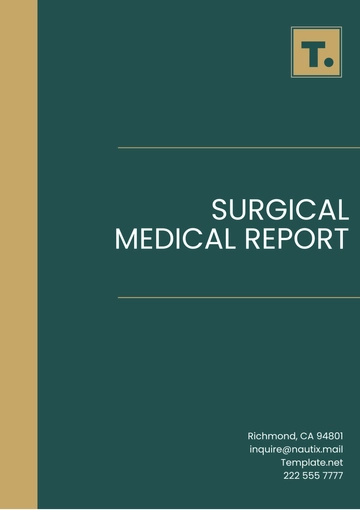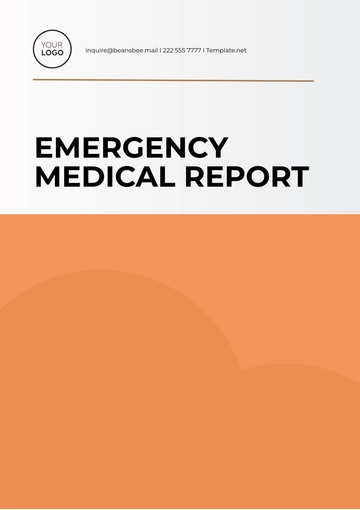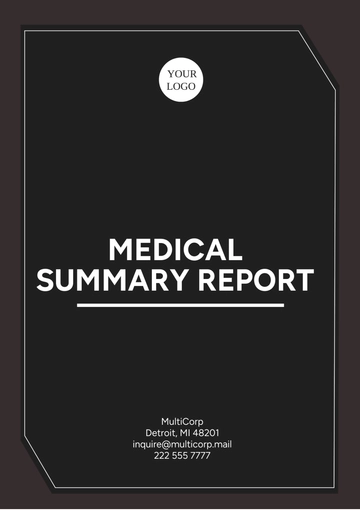Free Doctor%E2%80%99s Medical Report
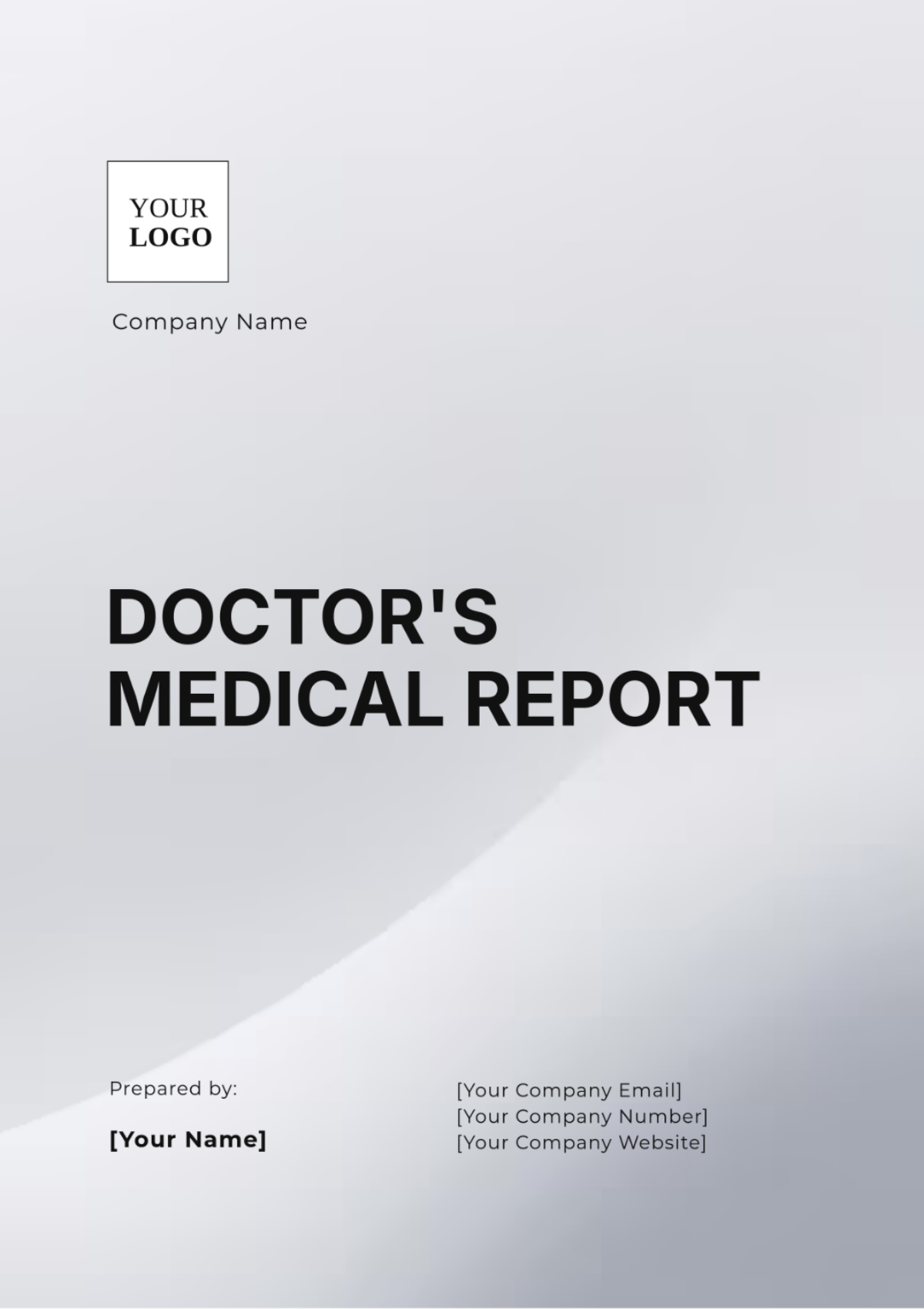
I. Patient Information
Patient Name: | [Your Name] |
Patient ID: | 123456789 |
Date of Birth: | January 1, 2050 |
Gender: | Male |
Contact Information: | 123-456-7890 |
Chief Complaint
The patient has come in for an evaluation, reporting an ongoing experience of chest pain. The discomfort started around two weeks before the current visit and has been persistent since that time.
History of Present Illness
[Your Name] is a 45-year-old male who reports experiencing intermittent chest pain radiating to the left arm, particularly during physical exertion. The pain is described as a pressure sensation, lasting approximately 15 minutes at a time. The patient denies shortness of breath or nausea. He has a family history of heart disease, with his father having a myocardial infarction at age 50.
Past Medical History
Hypertension, controlled with medication
Hyperlipidemia, managed with dietary changes
Medications:
Lisinopril 10 mg daily
Atorvastatin 20 mg daily
Allergies:
No known drug allergies
Physical Examination
Vital Signs:
Blood Pressure: 130/80 mmHg
Heart Rate: 76 bpm
Respiratory Rate: 18 breaths/min
Temperature: 98.6°F
General Appearance: Patient appears in no acute distress.
Cardiovascular: Regular rhythm, no murmurs or gallops.
Respiratory: Clear to auscultation bilaterally.
Abdomen: Soft, non-tender, no organomegaly.
Diagnostic Tests
ECG: Normal sinus rhythm, no acute changes noted.
Chest X-ray: Clear, no signs of cardiomegaly or pulmonary pathology.
Lab Tests:
Lipid Panel: LDL elevated at 130 mg/dL
Troponin: Negative
Diagnosis
Stable angina that occurs as a result of coronary artery disease (CAD).
Treatment Plan
Start the patient on nitroglycerin sublingual as needed for chest pain.
Refer to a cardiologist for further evaluation, including a stress test and possible cardiac catheterization.
Recommend dietary modifications to address hyperlipidemia.
Schedule a follow-up appointment in one month to assess progress and response to treatment.
Follow-Up
The patient is strongly advised to schedule an appointment and return to the healthcare facility at the earliest opportunity if there is any noticeable worsening of their existing symptoms or if any new health concerns or symptoms arise. This is to ensure timely medical attention and to address any potential complications promptly.
Signature:
 Dr. Emily White, MD
Dr. Emily White, MD
Internal Medicine
- 100% Customizable, free editor
- Access 1 Million+ Templates, photo’s & graphics
- Download or share as a template
- Click and replace photos, graphics, text, backgrounds
- Resize, crop, AI write & more
- Access advanced editor
Create comprehensive doctor reports with the Doctor’s Medical Report Template from Template.net. Fully customizable and editable, this template streamlines medical documentation and is editable in our Ai Editor Tool for easy use.
You may also like
- Sales Report
- Daily Report
- Project Report
- Business Report
- Weekly Report
- Incident Report
- Annual Report
- Report Layout
- Report Design
- Progress Report
- Marketing Report
- Company Report
- Monthly Report
- Audit Report
- Status Report
- School Report
- Reports Hr
- Management Report
- Project Status Report
- Handover Report
- Health And Safety Report
- Restaurant Report
- Construction Report
- Research Report
- Evaluation Report
- Investigation Report
- Employee Report
- Advertising Report
- Weekly Status Report
- Project Management Report
- Finance Report
- Service Report
- Technical Report
- Meeting Report
- Quarterly Report
- Inspection Report
- Medical Report
- Test Report
- Summary Report
- Inventory Report
- Valuation Report
- Operations Report
- Payroll Report
- Training Report
- Job Report
- Case Report
- Performance Report
- Board Report
- Internal Audit Report
- Student Report
- Monthly Management Report
- Small Business Report
- Accident Report
- Call Center Report
- Activity Report
- IT and Software Report
- Internship Report
- Visit Report
- Product Report
- Book Report
- Property Report
- Recruitment Report
- University Report
- Event Report
- SEO Report
- Conference Report
- Narrative Report
- Nursing Home Report
- Preschool Report
- Call Report
- Customer Report
- Employee Incident Report
- Accomplishment Report
- Social Media Report
- Work From Home Report
- Security Report
- Damage Report
- Quality Report
- Internal Report
- Nurse Report
- Real Estate Report
- Hotel Report
- Equipment Report
- Credit Report
- Field Report
- Non Profit Report
- Maintenance Report
- News Report
- Survey Report
- Executive Report
- Law Firm Report
- Advertising Agency Report
- Interior Design Report
- Travel Agency Report
- Stock Report
- Salon Report
- Bug Report
- Workplace Report
- Action Report
- Investor Report
- Cleaning Services Report
- Consulting Report
- Freelancer Report
- Site Visit Report
- Trip Report
- Classroom Observation Report
- Vehicle Report
- Final Report
- Software Report
